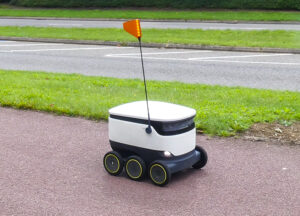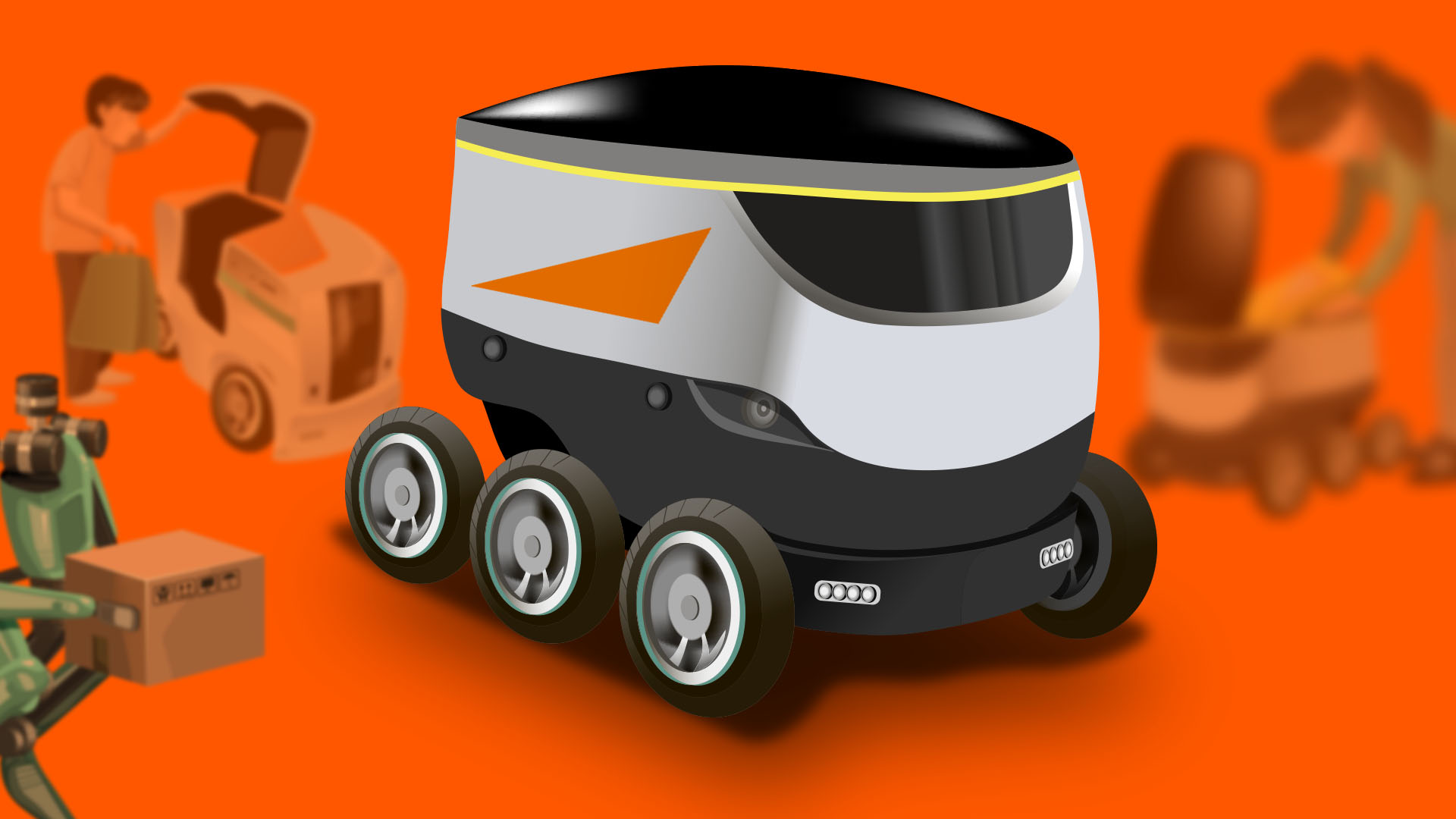It’s likely that in the future, we will see an abundance of robots on pavements or sidewalks. With advancements in autonomy, robotic systems are becoming ever more common in various industries, including delivery and transportation. At least 10 robot delivery vehicles now trundle on the pavement past my house daily. These robots typically use sensors such as cameras, GPS, LiDAR and other technologies to navigate and can communicate with the delivery recipients via a smartphone app. I predict that soon it will be normal in almost every major city to be sharing pavements with such robots.
In densely populated urban areas, the use of robots for delivery could help reduce traffic congestion and improve efficiency. For example, companies like Amazon are already experimenting with delivery robots to bring packages directly to customers’ doorsteps. In the longer term (2 years), we may see them outcompete the likes of Deliveroo and eventually Royal Mail (5 – 10 years). From a management perspective, robot maintenance doesn’t involve salary, sick pay, pension or national insurance contributions.
As companies seek ways to automate and optimize their delivery operations, we are seeing more people approach us to investigate how automated systems can benefit their operations:
- Cost savings: Delivery robots can reduce manual labour costs associated with traditional delivery methods.
- Improved efficiency: Delivery robots have the potential to deliver items faster and more frequently than humans.
- Reduced environmental impact: Delivery robots can reduce the carbon footprint associated with deliveries by using electric power instead of petrol/diesel. If the human and associated safety/infotainment features are removed, there is also less weight/energy to transport.
- Increased accessibility: Delivery robots can deliver goods to areas that are difficult or impossible for traditional delivery vehicles to reach, such as narrow streets or pedestrian-only areas. Taking this one step further, delivery robots can also be used to deliver key supplies in war torn/disaster areas where it is unsafe for a human to pass.
However, the deployment of robots on pavements also raises questions about safety, accessibility, and regulations. It’s important to consider how robots can coexist with pedestrians and other vehicles on the pavement without causing accidents or disruptions. As an example, I recently had to pick up and move a (45 kg) robot that was patiently waiting to cross a busy street but hadn’t given enough room for a mother with her pushchair to pass behind it. So whilst robotic systems provide a significant advantage to human society, especially with around the clock delivery services, we need to understand how they can co-exist with us on our travel networks.

When talking to my Industrial Design colleague, Andy Wynne, he is concerned about the design of delivery robots: “with any new product, the design should be functional but also explore the relationship between human and the technology. How do pedestrians interact with delivery robots, do they feel safe sharing their pavements with them? Will they respond to a pedestrian’s requests to politely move out of the way?
“Currently robotic delivery systems are suggested as low level transportation vehicles, wide in stature, a low centre of gravity with a number of wheels. This is for obvious reasons, but is this the right approach? They can be hard to see and take up valuable pavement retail space. Due to the safety aspects associated with the current design, delivery companies have tried to compensate by introducing high visibility lights and tall warning flags. Could the product architecture change however in order to minimise the pavement space they occupy? Could we begin to see taller, thinner and human height eye level visible units, possibly using gyroscope technologies to enable the balance of a large mass, similar to those of the self-balancing single wheel scooters that are highly moveable and can travel at good speeds.”
Overall, while it’s likely that we will have to routinely share pavements with robots in the future, it’s crucial to carefully evaluate the benefits, risks and regulatory frameworks before implementing them widely. For a more in depth conversation about product design please get in touch.

